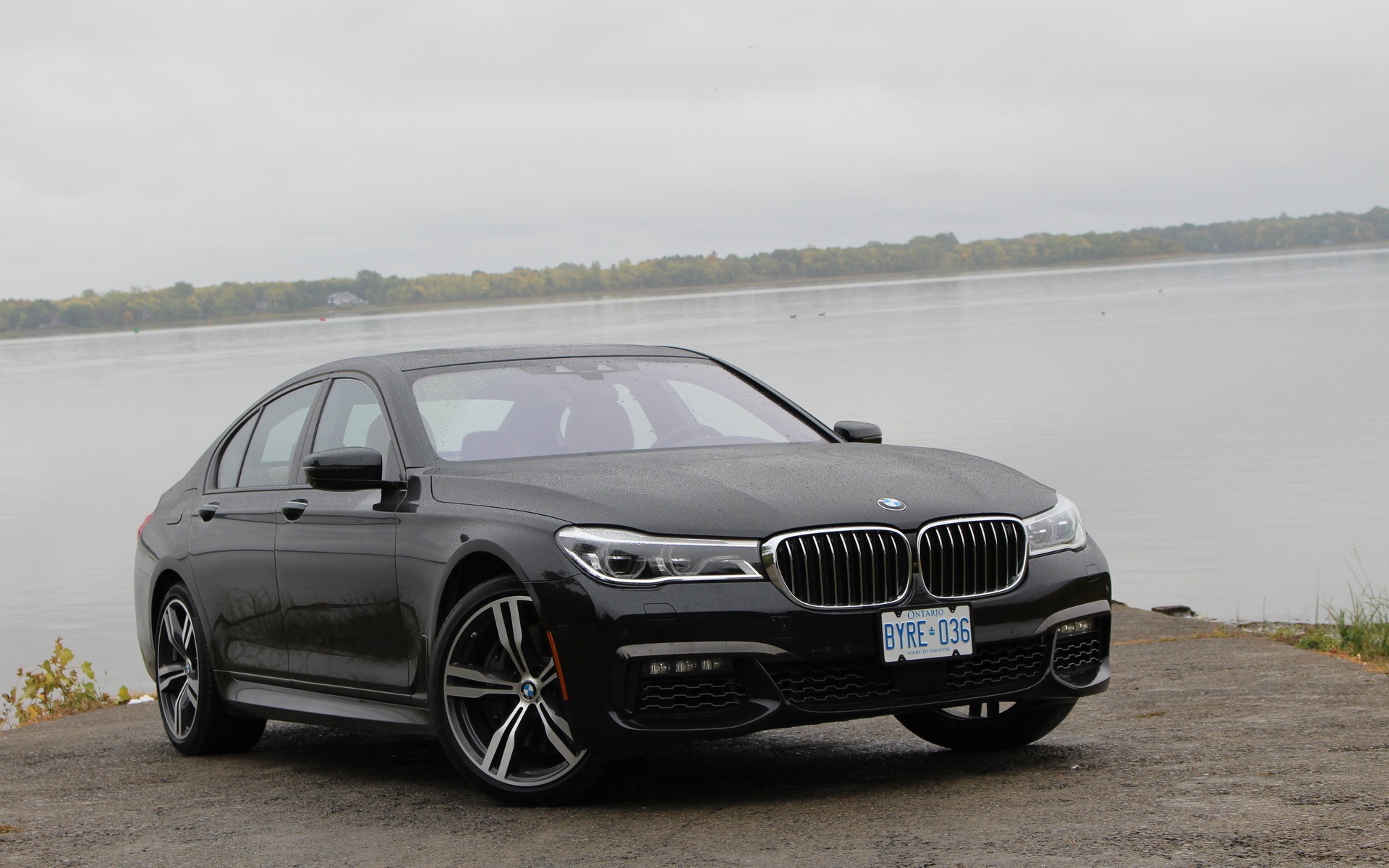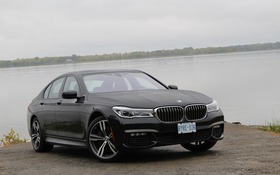2016 BMW 750i xDrive: The One to Beat… for Now

| Strong points |
|
|---|---|
| Weak points |
|
When shoppers dish out more than $100K on a luxury car, they’re entitled to expect the best, and German brands strive to give them just that. The full-size luxury sedan segment offers some of the most sumptuous, powerful and technologically advanced machines on the market, and the BMW 7 Series is no exception to that rule.
A long-time rival to the Audi A8/S8 and the Mercedes-Benz S-Class, the 7 Series was totally redesigned for the 2016 model year. And not a moment too soon, as sales of the Benz are climbing while the aging A8 is keeping pace, but will be due for a redesign in the next two years. The public’s reaction was positive, as Canadians are buying twice as many units of BMW’s flagship sedan in 2016, compared to the year before.
The 7 Series’ new style is sophisticated, dynamic and unmistakably BMW. The air vent on the front fenders doesn’t look elegant from every angle, but at least it breaks up the otherwise flat surface. The front-bumper air intakes bring some aggressiveness, and for aerodynamic purposes, the grille now incorporates active shutters. The latter is nothing revolutionary, but it’s something new at BMW.
Underhood, the 2016 BMW 750i xDrive we’re testing is equipped with a twin-turbocharged, 4.4-litre V8 that develops 445 horsepower and 480 pound-feet of torque. It’s managed by an eight-speed automatic transmission, which sends power through the brand’s all-wheel drivetrain that favours the rear wheels under normal driving.
It may be big, but the 750i is fast. According to the manufacturer, it can hit 100 km/h in 4.4 seconds, which sounds about right. Throttle response in Sport mode is very quick, a little less so in Comfort mode which softens the car’s ride and makes the drive more relaxing. An adaptive suspension system automatically adjusts itself based on road conditions and driver input. The result is very convincing, as the 750i always feels in perfect control. At the helm of this BMW, we managed a decent average of 11.2 L/100 km.

The 2017 model, which should soon be on sale, offers more powertrain choices with the 740Le iPerformance, a plug-in hybrid with 322 total horsepower and a combined city/highway rating of 8.8 L/100 km, the 608-hp Alpina B7 as well as the M760Li with a 600-horsepower V12 engine. On the other hand, we figure most buyers will be happy with the V8 in the 750i.
BMW has finally modernised the centre stack, replacing the old-school rows of black buttons by touch-sensitive or silver-coated buttons. Happily, the rotary knobs for audio volume and temperature control are still accounted for. The keyfob itself is almost as big as a smartphone, and includes a touchscreen to view some information about the car; it can be recharged by placing it inside the storage compartment between the front seats.
New for 2016 is what the brand calls Gesture Control. With a simple swirling motion of a fingertip in front of the centre stack will raise or lower the volume of the sound system, while a two-finger poke can be programmed to one of many functions, such as muting the audio system or changing channels. It’s a neat feature that will impress passengers, but isn’t really essential. We’re expecting many other manufacturers will follow with their own such gadget, Mercedes-Benz and Volkswagen being but two of them.
The overall interior appearance is more luxurious than before, with better looking wood veneers and more elegant stitching on the seats and dashboard. Stealing a page from the Mercedes-Benz S-Class, there are now heated armrests—which is nice—but also a fragrance dispenser that spreads a heavy dose of perfume throughout the front cabin, with a choice of available aromas. It’s just too much.
Rear-seat room is sufficient, but if owners prefer to be chauffeured, they can opt for the stretched 750Li, which adds 140 mm of extra wheelbase. The rear doors are longer and there’s more legroom, as if we were upgrading from business class to first class on an airplane. The optional Executive Lounge packages also equips the 750Li with—as the name suggests—lounge seating in addition to seat massaging, heating and ventilation as well as numerous power adjustments.
The BMW Touch Command feature is also available with the rear-seat entertainment or lounge packages, which is basically an Android-powered tablet that lodges in the fold-down armrest, and which can be removed—and dropped or lost, if we have kids.

As it has always been, the 2016 BMW 750i xDrive is a more dynamic alternative to the S-Class and its softer personality. It also slots in nicely between the A8 and the S8 in regards to sportiness and character. The new, lighter chassis makes the car agile, although the previous-generation model wasn’t exactly a porker, either.
Pricing starts at $113,900 before freight and delivery charges for the 750i xDrive, while the long-wheelbase 750Li costs an extra $4K. Our tester was loaded with soft-close doors, side sunshades, ventilated seats, a 360-degree camera system, an Alcantara roofliner, night vision camera, rear-seat entertainment systems, the aforementioned ambient air package as well as a Bowers & Wilkins Diamond surround sound system, for a total price of $132,600.
A lot of dough for a car, but pretty much in line with what the competition charges for their similarly equipped sedans. The BMW has the advantage of being the newest one of the three German cars, and thus it’s arguably the most technologically advanced our money can buy. What we’re going to say probably won’t be a surprise to anyone, but those who feel like driving their $100,000-plus supersedan instead of riding in it should check out the 7 Series first.











